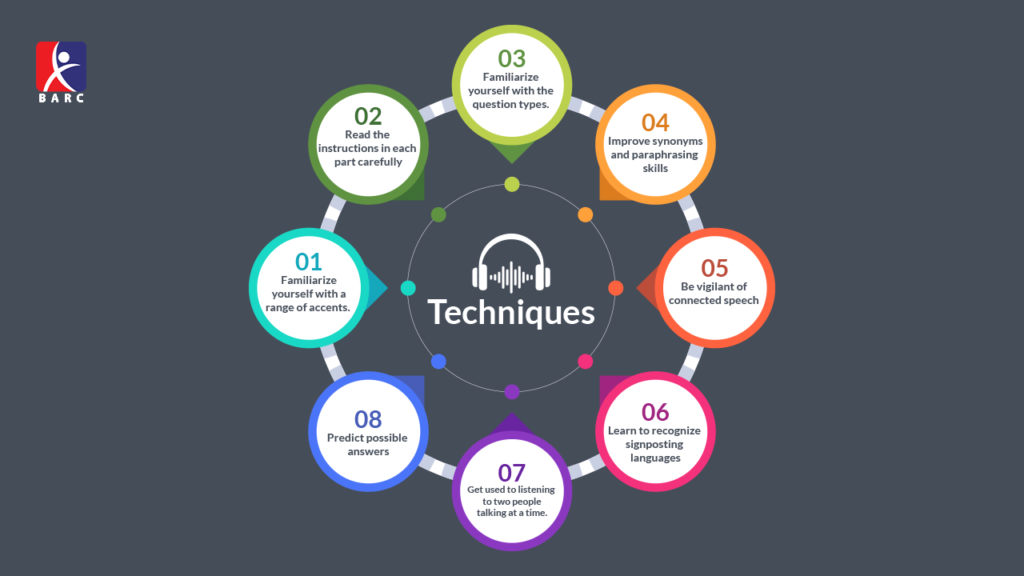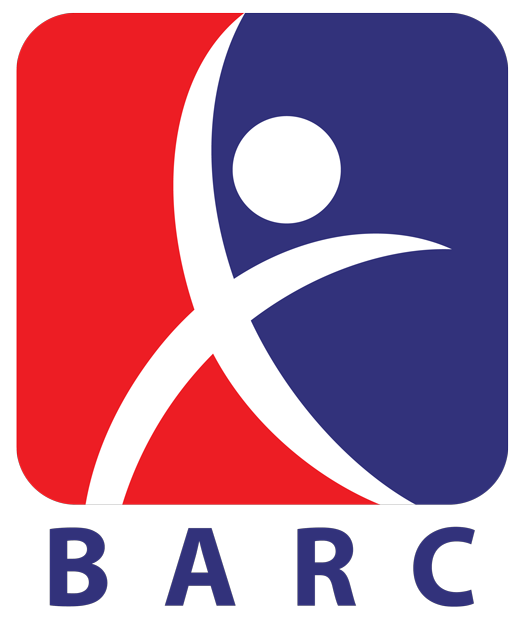
How to Get A Band 8 in IELTS Listening
IELTS Listening is such a section where you can improve faster than any other module. It’s sort of putting in minimum effort and getting maximum output.
So, if you are targeting a high overall score, this is the module you can target to uplift the overall score. But you need to know the strategies for having an amazing score in listening. This article paves the way for your listening success in IELTS listening.
Overview of IELTS Listening
How many parts are there in listening?
There are four different parts of the listening paper.
Are there the same number of speakers in each of the parts?
No, there will be monologues in Part 2 and 4 while in Part 1 and 3, there will be conversations of two and up to four speakers respectively.
How long does the test last?
The listening paper lasts for around 30 minutes and you will have extra 10 minutes to transfer your answers.
Techniques to improve your listening skills
1. Familiarize yourself with a range of accents.
In your IELTS preparation, it’s intuitive that you practice as much as possible for a better score. It would not be a problem for many candidates if the audio clips were in one fixed accent. In that case, practicing one particular accent over and over again would ease the exam quite a lot for the candidates.
However, to demonstrate the international nature of the test IELTS incorporates a variety of accents. The listening test involves a British accent (Southern England, Northern England, Scotland and Wales), North American Accent (Northern USA, Southern USA and Canada), Australian Accent, Kiwi Accent and South African Accent.
If you train your ears to listen to all these sounds, IELTS listening will be much easier for you. You might be thinking that where you will find them each. But click on this link to have access to all the accents that you’re likely to encounter in IELTS listening.
Surprisingly, you’ll find all the accents of IELTS listening there. Along with being proficient in English, being exposed to a wide range of accents will boost your possibility of a marvelous score.
2. Read the instructions in each part carefully
Unfortunately, lack of enough attention to the instruction, numerous candidates make mistakes in transferring the answers properly, resulting in despair when the result is out. For example, sometimes “ONE WORD ONLY” is written in the instructions.
Someone overlooking this instruction has a high chance of writing more than one word on the answer sheet and getting it incorrect at the end. Again, when “NO more than TWO words” is written on the answer sheet, you are not supposed to exceed two words.
Some candidates write up to three words whereas they can pick the correct answers. But they still will get fewer marks than their expectations. It’s merely because they failed to abide by the instruction.
More often than not, students make mistakes regarding that whether due to lack of concentration or due to nervousness.
3. Familiarize yourself with the question types.
This is especially important because your score largely depends upon your familiarization with the variety of question types available in the listening test. If you are good at note completion and avoid strong preparation on multiple choices, your chances of a bright score will plummet to a large extent.
On the other hand, if you grasp an equal command over short answer questions, sentence completion, summary completion, and flow-chart completion along with the rest of the question types of IELTS Listening, you have a significantly higher chance of succeeding in the listening section.
4. Improve synonyms and paraphrasing skills
Surprisingly, the IELTS listening test is not all about your listening skills. Instead, you have a lot to do with recognizing paraphrasing to articulate the answers well.
For instance, you may find “When did the sculpture establish?” in the question, but in the audio clip you will possibly listen to “The prominent sculpture began its journey in the 90s”.
In listening and reading, the bulk of the answers is paraphrased this way. Hence, the IELTS test will be a piece of cake as long as you are prompt at recognizing the paraphrasing.

5. Be vigilant of connected speech
When native speakers find teachers who speak clearly and slowly, maybe they become overly pleased. Nonetheless, this may pull your progress off. The reason is that while listening to the native speakers, candidates often find it challenging to understand what is being said. This is because of connected speech.
Connected speech is linking words or sounds together in a sentence. For instance, “I have to go to the doctor, I have an earache.’ Might sound more like ‘Ivetegote the doctor, Iveenearake.’ Other times, some sounds might sound ‘weak’ or change when put into a complete sentence.
To exemplify, ‘Do you want to go’ might sound more like ‘De ye want te go?’. Owing to such complexities, many candidates stumble in listening. But if you learn to recognize the way they speak since your self-practice at home, your chances of failing in listening will reduce dramatically.
6. Learn to recognize signposting languages
If you are clever, you would be able to find the listening answers even in sleep. How is it possible? Well, if you closely analyze the listening tests, you’d notice that finding answers in listening becomes way easier when you keep track of the direction of the speakers.
Signposting languages make it easy for you to find answers even if you lose your attention for a while. They enable you to come back on track. You might be wondering about what the signposting languages are. Firstly, secondly, in addition, finally, however, nevertheless, but, on the other hand, on the contrary, by contrast, and last but not the least are some of the signposting languages.
7. Get used to listening to two people talking at a time.
In each part of the listening paper, you’d not listen to the same number of speakers. In Part-1, for example, you will get to listen to two speakers having a dialogue. But in Part-3, you might listen to up to 4 speakers talking simultaneously.
So, unless you are mentally ready for it, and ideally trained for it by your regular practice, you might find it hard to extract the right answers out of the bunch of speakers having a conversation at a time.
When they jump from one speaker to another speaker, this could easily confuse you because each of them will have a different voice, tone, and accent. So, the test will substantially be easier for you if you are ready for listening to several speakers at a time.
8. Predict possible answers
This is inevitably one of the key skills in listening. Answer prediction skills can take you a long way in the listening test because it often gets you to close to the right answer even before you listen to it.
Let’s see how it works. You have seen a ‘$’ sign in the question, for example, you have then anticipated that it would be a number like 50, 120, or 1000 in the gap.
This will dramatically enhance finding out the correct answers 10 times faster. Again, if you can see “In a ……………. weather.” In a question, you should probably assume that words like ‘cloudy, sunny, cold, hot, moderate’ would best fill the gap.
Listening is indeed an easier module of IELTS. I hope these techniques will make it even the easiest for you to deal with IELTS listening and earn you the score you need.
Now, having a handsome band score like 7 or 8 will be a matter of time if you put the strategies outlined above into practice. All the best with your IELTS exam! Let me know if you have found them useful.


דירות דיסקרטיות בירושלים
Good post. I learn something new and challenging on sites I stumbleupon everyday. Its always interesting to read articles from other authors and practice something from other sites.